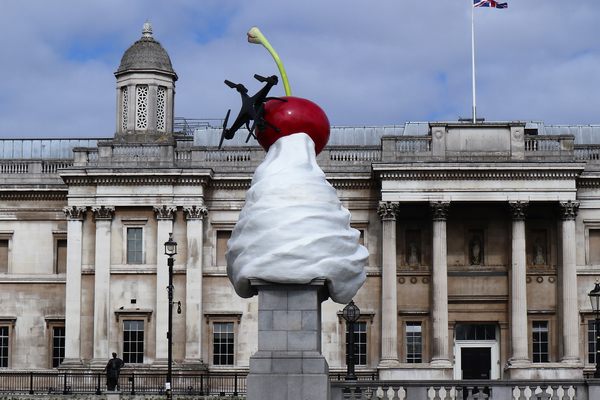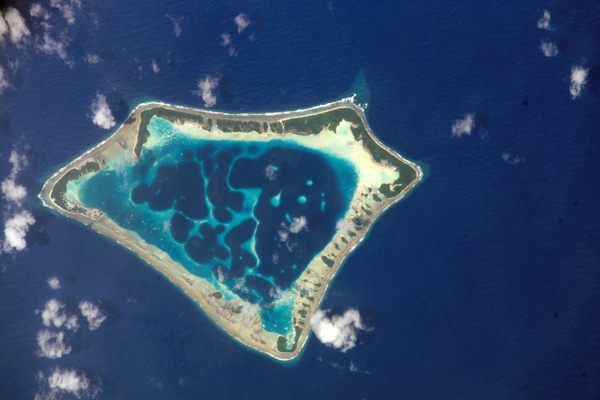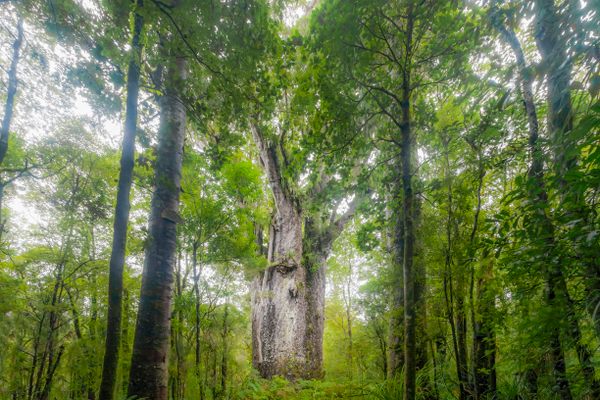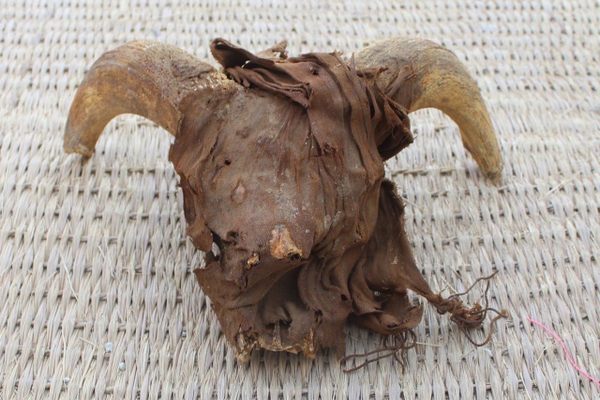Wonder Is Everywhere: Spider Wrestling, the Return of the Giant Peanut, and More from Around the Web
Get a peek into what we’re obsessed with right now.
Wonder is everywhere. That’s why, every other week, Atlas Obscura drags you down some of the rabbit holes we encounter as we search for our unusual stories. We highlight surprising finds, great writing, and inspiring stories from some of our favorite publications.

The Appalachian Trail Keeps Getting Longer
by Lizzie Johnson and Lauren Tierney, Washington Post
When it was completed in 1937, the Appalachian Trail stretched 2,050 miles from Georgia to Maine. Today, it is almost 2,200 miles. The Washington Post has mapped the most substantial of the thousands of route changes—and the highway construction, exhausted hikers, and bad smells behind them.
On Laro Ng Gagamba, the Filipino Pastime of Spider Wrestling
by Gideon Lasco, Sapiens
A fear of spiders, or arachnophobia, is common around the world, writes anthropologist Gideon Lasco. But his home country, the Philippines, is an exception. He grew up playing laro ng gagamba (literally “game of spiders”), a tradition of catching spiders, caring for them, and pitting them against each other.
An Alaska Town on the Move Because of Climate Change
by Emily Schwing, High Country News
Newton, Alaska, is one of the United States’ first climate-change-driven relocation projects. But as the water-logged town crumbles, the costly complexities of constructing a whole new village in one of the most remote parts of the country has left many residents in a dangerous limbo.


Is This the World’s First-Known “Boomerang Meteorite”?
by Harry Baker, LiveScience
A 23-ounce rock discovered in the Moroccan Sahara could be a “terrestrial”—or “boomerang”—meteorite, some scientists say. That is, it could be a rock that originated on Earth, was ejected into space millions of years ago, and has now fallen back to us.
“Rare Intact Roman Burial Site” Uncovered in Gaza
by Hadani Ditmars, The Art Newspaper
Palestinian archaeology students working near the city of Jabalya discovered more than 125 tombs and two rare lead sarcophagi from the second and third centuries at the Ard-al-Moharbeen necropolis.
A Fossil Captures a Death Battle’s Final Moments
by Ari Daniel, All Things Considered
A remarkable fossil found in northeast China shows two intertwined skeletons—a mammal and a dinosaur locked in battle before being buried in a volcanic eruption. The bones, dating to the early Cretaceous some 125 million years ago, could deepen scientists’ understanding of the prehistoric food chain.

Georgia’s Giant Peanut Returns
by Jeff Amy, Associated Press
Five years ago, Hurricane Michael toppled a giant peanut from the pedestal along I-75 where it had stood for more than four decades. Now a new nut—made of sheet metal instead of fiberglass—welcomes visitors to the town of Ashburn, Georgia.
Alan Turing Could Stand on the Fourth Plinth
by Tessa Solomon, Art News
The northernmost plinth in Trafalgar Square in London, built in 1841, was meant to hold a statue of King William IV. But money woes kept the Fourth Plinth empty for 150 years. Since 1998, the space has been occupied by temporary sculptures, but now the outgoing British Defense Secretary has proposed a permanent tribute to Alan Turing, storied mathematician and World War II codebreaker.
What Should Happen to Tern Island?
by Joe Spring, Smithsonian Magazine
A former military outpost in Hawaiʻi is falling apart, threatening an estimated 300,000 seabirds, critically endangered monk seals, and other wildlife that call the 26-acre atoll home. Scientists wonder, now what?
























































Follow us on Twitter to get the latest on the world's hidden wonders.
Like us on Facebook to get the latest on the world's hidden wonders.
Follow us on Twitter Like us on Facebook